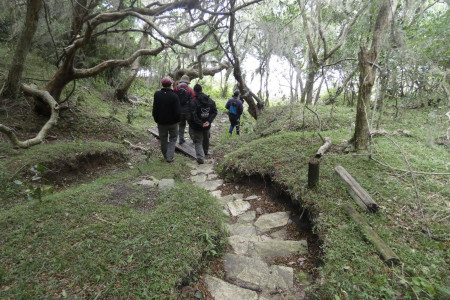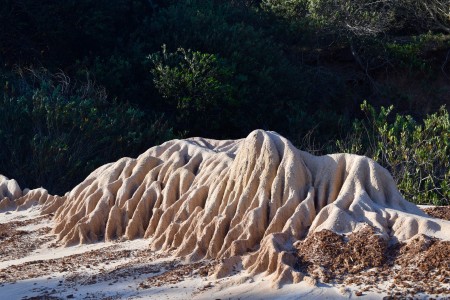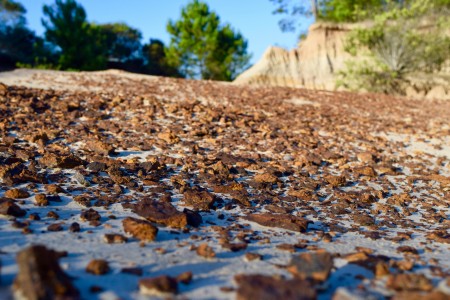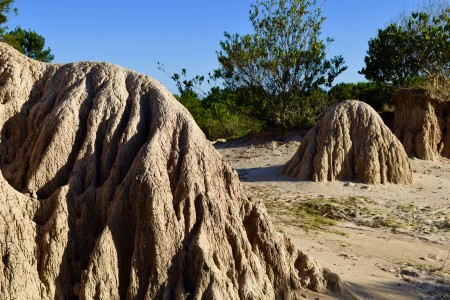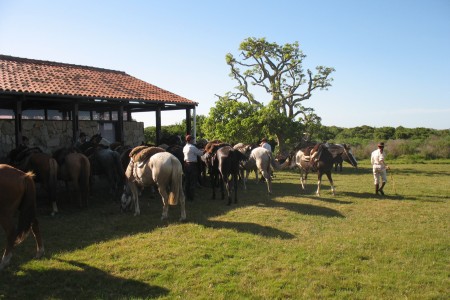The Cárcavas of Punta Rubia are particular geological formations of great dimensions that are found mainly in the area of Punta Rubia and Santa Isabel, 1 km from La Pedrera and that extend for 5 km, parallel to the Atlantic Ocean. It is accessed by route 10 at kilometer 230. Locals and neighbors also call the area “Valle de la Luna" (Moon Valley).

They represent a millenary landscape on the Uruguayan coast, more than 140,000 years old, which today is increasingly visited. Its majesty, added to the presence of a great variety of autochthonous animal and vegetal species, make the landscape widely attractive.
It is said to house fossils, as well as glyptodonte vertebrae and all kinds of elements that were used by the natives who inhabited the coast.
What are the cárcavas/gullies?
The cárcavas are natural erosions that occur by a process such as that which occurs after the freezing of the poles, when the melting occurs, which causes something similar to a tsunami that rips the most sensitive areas of the soil.
Specifically, these gullies belong to the Chuy Formation, have steep ravines and heavily eroded sectors.

What can you see?
The visitor, in addition to enjoying the beauty of the surroundings, takes a general view of the cultural, historical, indigenous, natural and geological heritage of this area and the department of Rocha in general. If you look carefully you can find traces of different animals, such as weasels, hares, foxes, raccoons, skunks and guazubirá among others.
